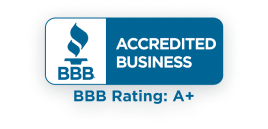
Sean Fitzgerald, PG, is a research geologist specializing in asbestos environmental studies.
EaglePicher Industries Asbestos Personal Injury Settlement Trust Fund compensates people exposed to the company's asbestos insulation used in military applications. EaglePicher created a $397 million trust in 1996.

EaglePicher created its asbestos trust fund during a company reorganization to handle current and future asbestos claims. The company funded the trust with cash, shares of the reorganized company and other payment promises that provide future cash over time to cover the trust’s costs and pay claimants.
Eagle Picher Industries Inc. Trust Updates
Bankruptcy Judge Burton Perlman oversaw the case that set EaglePicher’s total asbestos liabilities at $2.5 billion, much higher than the $1.65 billion the company and some creditors proposed. EaglePicher’s asbestos trust fund began accepting claims on August 1, 1997. Despite these efforts, EaglePicher faced new asbestos exposure and environmental claims that caused more than $500 million in additional debt and led to a second bankruptcy filing in 2005.
Experienced asbestos lawyers help people exposed to EaglePicher products file trust claims. They verify asbestos exposure from the company’s products and ensure your claim with the Eagle-Picher Industries, Inc. Personal Injury Settlement Trust is filed correctly and on time.
Your lawyer can also assess if there are additional mesothelioma compensation options open to you. They’ll review the sites you may have worked at like Navy ships, mines and power plants, and the products you would have encountered to see if there are other companies involved. While lawsuits can no longer be brought against EaglePicher, you may be able to file a lawsuit against other responsible companies.
Choosing a lawyer you and your family will feel comfortable working with for your asbestos trust fund claim or lawsuits against other asbestos companies is important. Patient Advocates can help, connecting you with the right legal expert whose expertise matches the details of your case and makes you and your family comfortable with the process. Our team can also help you find top doctors at renowned cancer centers, schedule appointments and work with your insurance.
Mesothelioma lawsuits against EaglePicher began as early as 1982, with plaintiffs diagnosed with lung cancer, asbestosis and mesothelioma. By 1991, U.S. District Judge Jack B. Weinstein suspended cases involving 70,000 plaintiffs.
The company listed $583 million in liabilities including $375 million specifically for asbestos claims. Over the years, EaglePicher settled 65,000 claims for about $600 million before the 1991 bankruptcy transferred remaining claims to the court, ultimately leading to the creation of the trust fund.
One well-known case involved Charles Press, a U.S. Navy sheet metal worker. From 1941 to 1979, Press worked at the Philadelphia Naval Shipyard and was regularly exposed to asbestos insulation products. EaglePicher and other companies manufactured these asbestos-containing products.
In 1979, Press and his wife Thelma filed a lawsuit against EaglePicher and 21 other manufacturers to recover the costs of his asbestos-related disease. He passed away 4 years later, but his widow pursued the suit and won. In 1984, EaglePicher and 7 other defendants were ordered to pay $575,000 to Thelma Press. She received $68,000 from EaglePicher.

Gain access to trust funds, grants and other forms of compensation for you or your loved ones.
Get Help NowEaglePicher Industries began using asbestos after its founding in 1916 when Oliver Picher’s mining business merged with Eagle White Lead to focus on zinc, diatomaceous earth and storage batteries. World War II increased demand for EaglePicher products, especially batteries for the military.
Asbestos offered strength and resistance to heat and fire. This made it the material of choice for insulating military ships and vehicles. EaglePicher mined and used asbestos in its products until the mid-1970s, putting thousands of workers and installers at risk of mesothelioma.
As lawsuits seeking accountability for illnesses associated with EaglePicher’s asbestos-containing products mounted, the company reorganized twice in 1991 and 2009. Then OM Group Inc. (now Vectra) bought EaglePicher in 2010 and sold most of its subsidiaries.
Today, EaglePicher Technologies supplies power solutions for defense, aerospace and medical clients. In 2017, the business expanded when it acquired Lithiumstart Inc., a San Francisco manufacturer of lithium ion Energy Storage Systems.
Many workers across a variety of job types may have encountered EaglePicher asbestos products during their careers. Most individuals exposed to asbestos from these products worked in construction-related fields.
Higher Risk jobs
According to the EaglePicher Industries Settlement Trust, more than 6,500 employers are presumed to have used the company’s asbestos products. Asbestos-containing insulating materials were used on U.S. Navy ships during World War II to reduce fire hazards. Because EaglePicher supplied the military, many service members also faced risks of asbestos exposure from these products.
EaglePicher primarily used asbestos as a key ingredient in its insulation products. However, the company also produced many other construction materials containing asbestos.
Common EaglePicher Asbestos Products
Use of these products exposed workers and consumers to toxic asbestos fibers that can cause serious illnesses such as mesothelioma, lung cancer and asbestosis. Anyone who worked with or near these asbestos-containing products faces long-term health risks.
Recommended ReadingStay up-to-date on treatment, research, clinical trials, doctors and survivors
The information on this website is proprietary and protected. It is not a substitute for professional medical advice, diagnosis or treatment. Any unauthorized or illegal use, copying or dissemination will be prosecuted. Please read our privacy policy and terms of service for more information about our website.
This website and its content may be deemed attorney advertising. Prior results do not predict a similar outcome.
The Mesothelioma Center’s claim as the most trusted resource is based on our more than 150 5-star Google and BBB reviews. Our organization also helps more than half of all mesothelioma patients annually diagnosed.
Your web browser is no longer supported by Microsoft. Update your browser for more security, speed and compatibility.
If you are looking for mesothelioma support, please contact our Patient Advocates at (855) 404-4592
The Mesothelioma Center at Asbestos.com has provided patients and their loved ones the most updated and reliable information on mesothelioma and asbestos exposure since 2006.
Our team of Patient Advocates includes a medical doctor, a registered nurse, health services administrators, veterans, VA-accredited Claims Agents, an oncology patient navigator and hospice care expert. Their combined expertise means we help any mesothelioma patient or loved one through every step of their cancer journey.
More than 30 contributors, including mesothelioma doctors, survivors, health care professionals and other experts, have peer-reviewed our website and written unique research-driven articles to ensure you get the highest-quality medical and health information.
My family has only the highest compliment for the assistance and support that we received from The Mesothelioma Center. This is a staff of compassionate and knowledgeable individuals who respect what your family is experiencing and who go the extra mile to make an unfortunate diagnosis less stressful. Information and assistance were provided by The Mesothelioma Center at no cost to our family.LashawnMesothelioma patient’s daughter


Asbestos.com. (2025, December 12). EaglePicher Industries Inc.. Retrieved December 18, 2025, from https://www.asbestos.com/companies/eagle-picher-industries-inc/
"EaglePicher Industries Inc.." Asbestos.com, 12 Dec 2025, https://www.asbestos.com/companies/eagle-picher-industries-inc/.
Asbestos.com. "EaglePicher Industries Inc.." Last modified December 12, 2025. https://www.asbestos.com/companies/eagle-picher-industries-inc/.
An occupational scientist or another expert who specializes in occupational hazards reviewed the content on this page to ensure it meets current scientific standards and accuracy.

Sean Fitzgerald, PG, is a research geologist specializing in asbestos environmental studies.
Our fact-checking process begins with a thorough review of all sources to ensure they are high quality. Then we cross-check the facts with original medical or scientific reports published by those sources, or we validate the facts with reputable news organizations, medical and scientific experts and other health experts. Each page includes all sources for full transparency.
Please read our editorial guidelines to learn more about our content creation and review process.
